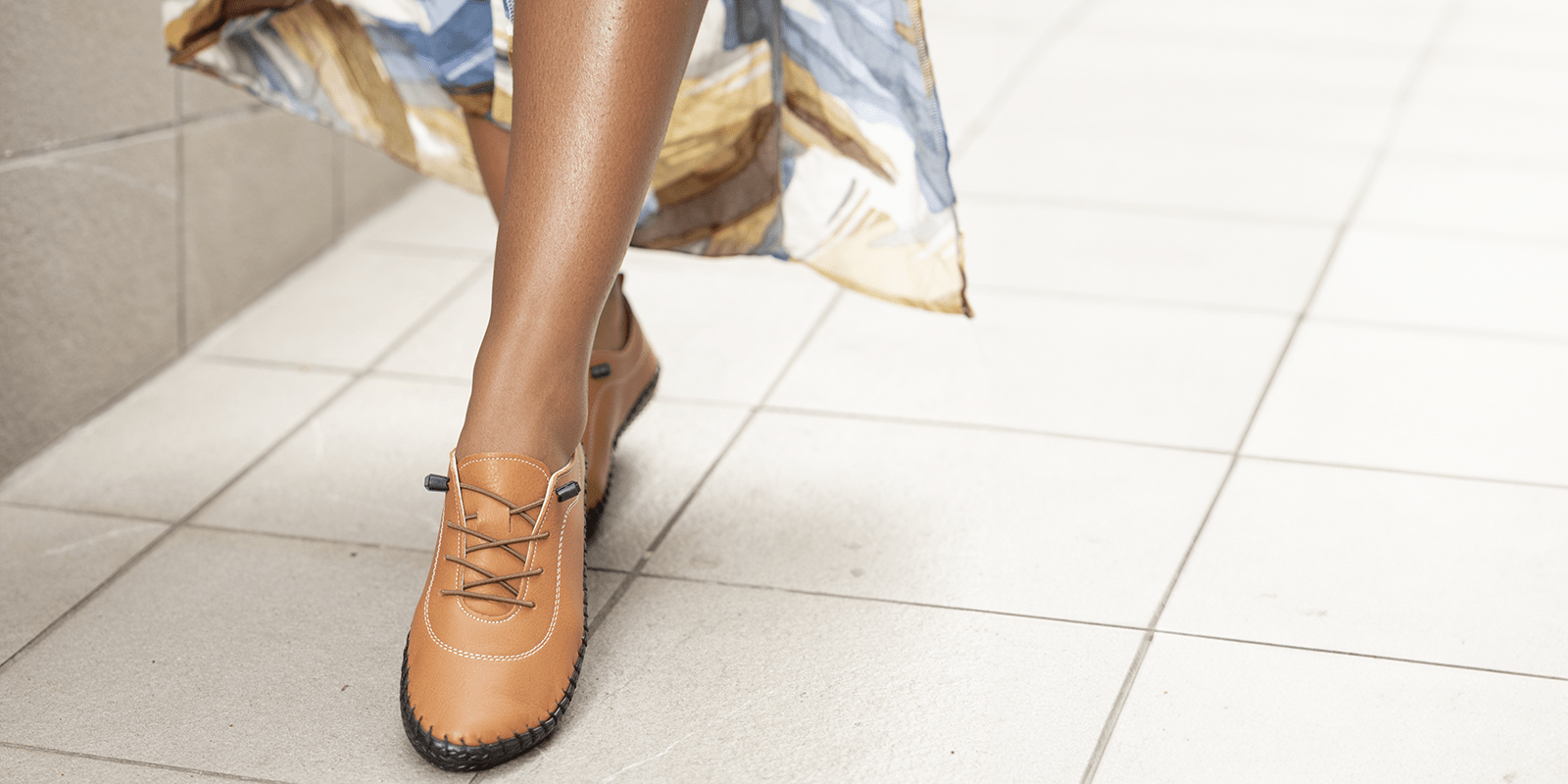Discovering the perfect pair of shoes is about more than just style and size; it's about understanding the unique needs of your feet, especially when it comes to width. In this comprehensive blog, we delve deep into the world of wide shoes, offering essential insights and expert tips to help you find the ideal balance of comfort and elegance in your footwear. Whether you're curious about how to determine your foot width or seeking advice on selecting shoes that cater to wider feet without sacrificing style, this guide is your go-to resource. Join us on a journey to uncover the secrets of comfortable, fashionable footwear tailored for those with wide feet.
Does Shoe Width Matter?
While many people pay close attention to shoe size, shoe width often goes unnoticed. However, it plays a pivotal role in ensuring foot health and overall comfort. Ill-fitting shoes, be it too narrow or too wide, can cause a myriad of foot problems. From creating discomfort and causing blisters to contributing to more serious conditions like bunions, corns, and hammertoes, the wrong shoe width can be detrimental to your foot health.
Why is the right width so important? Shoes that are too narrow can constrict your feet, leading to circulatory problems and nerve damage. On the other hand, shoes that are too wide can cause your foot to slide around, leading to instability and increased risk of ankle sprains and other injuries.
Identifying Your Foot Width: A Step-by-Step Guide
Knowing the width of your feet is just as important as knowing their length. Here’s how you can accurately determine your foot width:
Trace Your Foot: Place a piece of paper on the ground and stand on it. Carefully trace the outline of your foot. Ensure you hold the pencil upright and close to your foot for accuracy.
Measure the Width: Once you have the outline, measure the widest part of your foot, which is usually across the ball of your foot. Record this measurement.
Compare with Size Charts: Use your measurement to compare with standard shoe width size charts, which can often be found online. These charts will help you understand if you need a standard, wide, or extra-wide fit.
Foot-Measuring Tools: Alternatively, many shoe stores are equipped with foot-measuring tools. These devices can not only measure the length of your foot but also its width, giving you a more accurate understanding of your shoe size.
Consider Variations in Feet: It's also important to note that the width of your feet can change over time due to factors like aging, weight changes, or foot conditions. Additionally, it's not uncommon for one foot to be slightly wider than the other, so make sure to measure both feet.
Consult a Professional: If you're unsure or have specific foot conditions, consulting with a podiatrist or a professional shoe fitter can provide valuable insights and recommendations for choosing the right shoe width.
Understanding both the length and width of your foot is crucial in finding shoes that fit perfectly. A well-fitting shoe should snugly accommodate the width of your foot without causing any discomfort, ensuring a balance of comfort, support, and style. Remember, a good fit in width is just as important as the right length to maintain healthy, happy feet.
How to Tell If You Have Wide or Narrow Feet?
Determining the width of your feet is essential for finding shoes that fit comfortably and support your foot health. Here are signs to look for and steps to take to identify if you have wide or narrow feet:
Signs of Incorrect Shoe Width
Discomfort and Pain: If your shoes consistently cause discomfort, pinching, or pain, especially in the widest part of your foot, this is a clear sign that your shoes might not be the right width.
Overhang and Spillage: Observe if your foot spills over the sole of the shoe. If the sides of your foot extend beyond the base of the shoe, it’s a sign that the shoes are too narrow for your feet.
Blisters and Calluses: Blisters, corns, or calluses forming on the sides of your feet can be a result of constant rubbing against the sides of a shoe that’s too narrow.
Toe Crowding: If your toes feel cramped or overlap each other, your shoes are likely too narrow. Wide feet need more room across the toe box.
Markings on Feet: After taking off your shoes, check for red marks or indentations on your feet, particularly across the widest part. This indicates that your shoes are squeezing your feet.
Evaluating Your Foot Type
Visual Inspection: Stand barefoot on a flat surface and observe the shape of your feet. Compare the width of your foot to its length. If your feet appear notably wide in proportion to their length, you likely have wide feet.
Tracing Test: Trace your foot on a piece of paper and then measure the width. Compare this measurement with standard shoe size charts to determine if you require a wide or extra-wide shoe.
Professional Measurement: For a more accurate assessment, visit a shoe store or a podiatrist to have your feet professionally measured.
Tips for Wide Feet
Seeking the Right Brands: Look for brands known for catering to wide feet. These brands typically design shoes with ample space in the toe box and across the foot to ensure a comfortable fit.
Checking for Adjustable Features: Shoes with laces, buckles, or Velcro straps can be adjusted to better fit wide feet. These features can provide extra room and a customized fit.
Prioritizing Material and Design: Choose shoes made from materials that offer some stretch, like soft leather or canvas. Avoid shoes with rigid materials and narrow designs.
Trying Different Styles: Experiment with various shoe styles. Some designs, like those with a rounded toe box, naturally offer more room for wide feet.
By understanding these signs and tips, you can better assess whether you have wide or narrow feet and make informed choices when selecting footwear. Remember, the right shoe width is just as important as the right length for optimal comfort and foot health.
How to Buy Shoes If You Have Wide Feet?
Purchasing shoes for wide feet requires some extra consideration. Here are some key tips:
Measure Your Feet Often
Feet can change in size and shape over time, so regular measurement is vital, especially for those with wide feet.
Balance Comfort and Style
You don't have to choose between comfort and style. Our shoes are designed to cater to wide feet without compromising aesthetics. They feature elastic no-tie laces for added convenience, making them a perfect addition to your footwear selection.
Understanding Materials and Construction
Materials that offer flexibility, like leather or canvas, can be more accommodating for wide feet. Look for shoes with adjustable features like laces or straps, which can help achieve a better fit.
Consider Insoles and Orthotics
Custom insoles or orthotics can significantly enhance comfort, especially for wide feet that may need additional support.
Final Thoughts
Understanding the nuances of wide feet and how to find the right shoes can greatly enhance your comfort and foot health. Remember, the perfect pair of shoes should feel comfortable from the start and complement your style effortlessly. Explore the world of wide shoes and experience the difference in your daily comfort and elegance. Don't miss out on limited edition European style comfort shoes for women – get yours while supplies last.



